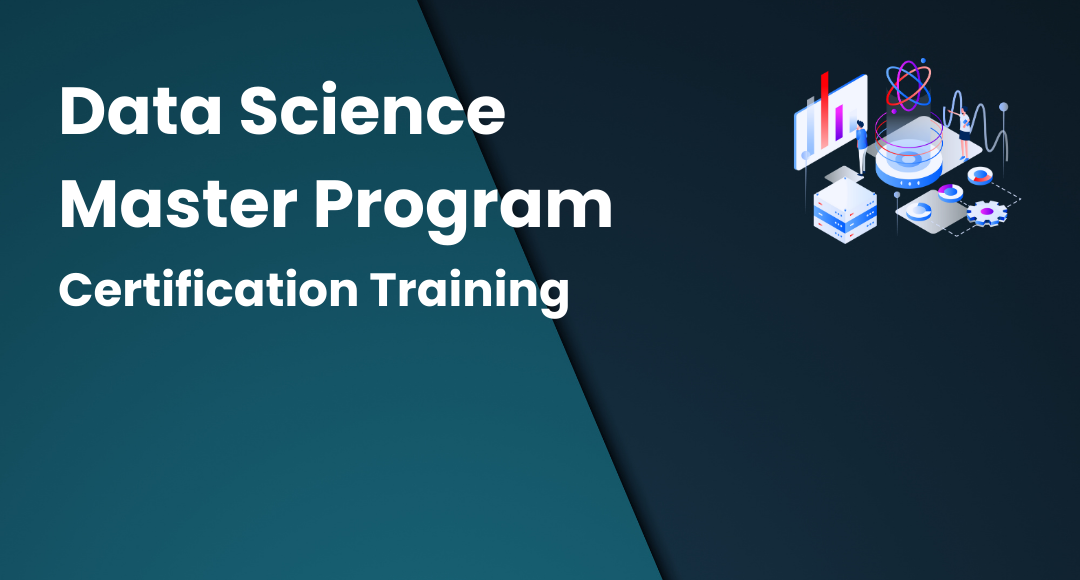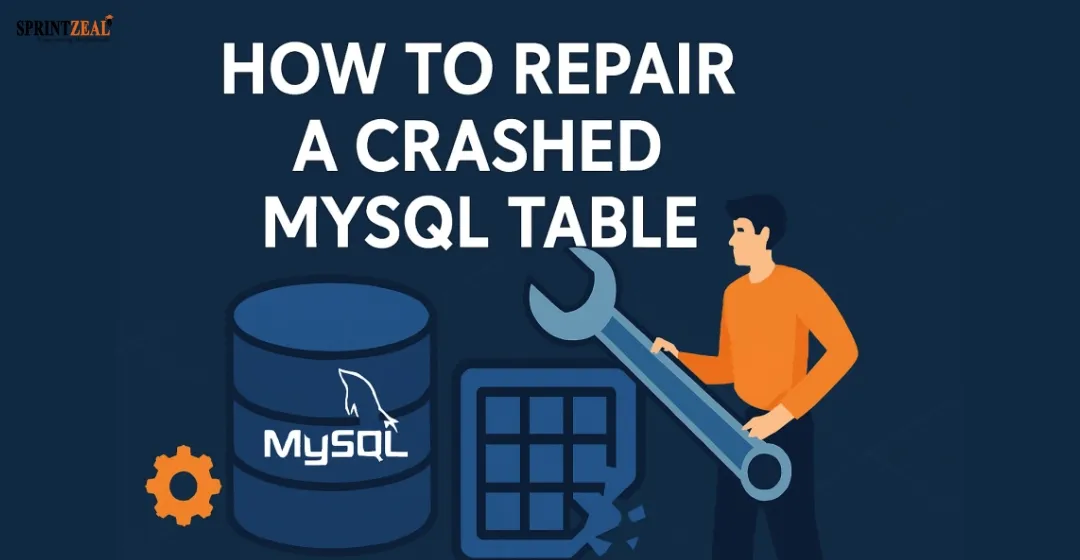Top Database Interview Questions and Answers
-
 By Niharika Chaurasia
By Niharika Chaurasia - Published on Mar 8 2024

Table of Contents
Introduction
Over the years, database fields have advanced, and database management systems are widely used by organizations. With the rise of the IT field, an enormous amount of data is generated every day. To quickly and effectively access and share big data for analysis and interpretation, a DBMS is essential for organizations.
This article covers all the most important and commonly asked "Database" interview questions and answers, which will help beginners and experienced professionals to crack any interview. Similar to any other interview, the interviewer is likely to examine both your technical and theoretical talents listed on your resume.
→ You must remember to have a thorough knowledge of the various technologies that are listed in your resume.
→ Along with that, you also have to stay up to date on the latest trends in the field, and have a strong command of the basic fundamentals.
→ Now, it is essential for you to be prepared to demonstrate your technical skills to the interviewer.
→ At last, you must remember to prepare with the most asked database interview questions listed below!
Database Interview Questions for Beginners
1. What is a ‘Database’?
A database is a collection of structured and stored data that can be used to accomplish a specific task. Example: A library is a database of Books, where books are placed in different sections according to the subjects.
2. What do you mean by ‘DBMS’?
DBMS basically stands for Database Management System. So, in simple words, it is a collection of application programs that will allow you to organize, restore, as well as retrieve information about data in a very efficient as well as effective manner.
3. What do you mean by RDMS?
RDBMS basically stands for "Relational Database Management System."
You must remember that it is based on a relational model of data that is stored in databases in separate tables, and they are related by the use of a common column.
Along with this, you must also keep in mind that data can be accessed easily from the relational database through the use of Structured Query Language (SQL).
4. What do you mean by data redundancy?
You must know that Data redundancy is basically the duplication of data in the database. Along with this, also keep in mind that because of data redundancy, the duplicated data exists in multiple locations, which in a way wastes storage space and compromises data integrity.
5. What is a "record" in a database?
A ‘record’ is the collection of values or fields of a specific entity.
6. What is a ‘field’ in a database?
A ‘field’ is an area within a record reserved for a specific piece of data. Fields are organized into records, which contain all the information within the table relevant to a specific entity.
7. What are database languages? What are the types?
To create or write database management systems, database languages are used. They are mainly of three types:
→ Data definition language
→ Data manipulation language
→ Query language
This is one of the important database interview questions that can be expected in the interview process.
8. What is a ‘unique key’?
The unique key is the same as the primary key, with the difference being the existence of null. The unique key field allows one value as a NULL value.
9. What is a ‘composite key’?
A ‘composite key’ is a combination of two or more columns in a table that can be used to uniquely identify each row in the table.
10. What is a ‘foreign key’?
A ‘foreign key’ is a field (or collection of fields) in one table that uniquely identifies a row in another table or the same table.
11. What is a ‘cursor’?
A cursor is a database object that helps in manipulating data row by row, representing a result set.
12. What are the different types of cursors?
The different types of cursors are:
Implicit cursor: Declared automatically as soon as the execution of SQL takes place without the awareness of the user.
Explicit cursor: Defined by PL/ SQL, this handles queries in more than one row.
Now, we have listed some common database interview questions for the experienced level.
Database Interview questions for experienced
Here are the top database interview questions for the experienced level that you can prepare for your interview process.
13. What are Joins? Mention the various types of joins.
Joins exhibit two or more tables and are primarily of four types:
→ Inner Join
→ Outer Join is subdivided into two types: right outer join and left outer join.
→ Natural Join
→ Cross Join
14. What do you understand by Data Independence? What are its types?
Data independence refers to the capability to change the schema definition at one level in such a way that it does not affect the schema definition at the next higher level.
There are two types of data independence:
→ Physical Data Independence: It changes the schema at the physical level without affecting the schema at the conceptual level.
→ Logical Data Independence: It changes the schema at the conceptual level without affecting or causing changes in the schema at the view level.
Tip: Remember to prepare this type of database interview question thoroughly, as this can be expected in your interview.
15. What is SQL?
Structured Query Language (SQL) is an ANSI standard language for updating databases and commands for accessing.
16. Differentiate between ‘DELETE’, ‘TRUNCATE’, and ‘DROP’ commands.
17. What is Database partitioning?
Data partitioning is a partition of the logical database into independent, complete units for improving its management, availability, and performance.
18. Explain the importance of partitioning.
The importance of database partitioning is:
→ To significantly improve query performance in situations where the majority of heavily accessed rows are in a single partition
→ Accessing large parts of a single partition
→ Slower and cheaper storage media can be used for data that is rarely used.
19. Explain the Database transaction.
A database transaction (DB transaction) is a unit of work performed within a database management system. It can be either completed or uncompleted as a unit.
The system will reflect successful completion after the transaction is completed; if the transaction fails, no change will be reflected. Database transaction processing helps maintain the integrity of the database.
20. What are the different types of manipulation possible in manipulating a database?
The different types of manipulation possible in a database are:
→ Searching
→ Sorting
→ Merging
→ Filtering
→ Performing Calculations on data
→ Editing the database
→ Report Generation
21. Explain Database Index and Indexing.
A database index is a data structure that advances the speed of data retrieval operations on a database.
The procedure of increasing the collection of indexes is known as "index hunting." It improves the speed and query performance of the database. It can be done by various methods, such as query optimization and query distribution.
22. What are the different types of indexes?
There are three types of indices:
→ Unique Index: This indexing does not allow the field to have duplicate values if the column is uniquely indexed. A unique index can be applied automatically when the primary key is defined.
→ Clustered Index: This type of index reverses the physical order of the table and searches based on the key values. Each table can have only one clustered index.
→ NonClustered Index: NonClustered Index does not alter the physical order of the table and maintains the logical order of data. Each table can have 999 nonclustered indexes.
23. Explain the difference between intension and extension in a database.
The following is the major difference between intension and extension in a database:
→ Intension: Intension, or popularly known as a database schema, is used to define the description of the database. It is specified during the design of the database and mostly remains unchanged.
→ Extension: Extension, on the other hand, is the measure of the number of tuples present in the database at any given point in time. The extension of a database is also referred to as the snapshot of the database, and its value keeps changing as and when the tuples are created, updated, or destroyed in the database.
24. What are the differences between views and tables?
Here is the difference between the views and tables listed below:
25. What is a temporary table? Write a query to create a temporary table.
A temporary table helps us store and process intermediate results. Temporary tables are created and can be automatically deleted when they are no longer needed. They are very beneficial in places where temporary data needs to be stored.
26. What do you mean by SQL injection?
SQL injection is basically a technique that is used by black-hat hackers to steal data from databases or tables.
27. How can you add several rows in Structured Query Language?
You can actually add several rows in a structured query language by making use of the following syntax -

Firstly, you have to add the keywords ‘INSERT INTO’ and enter the table’s name to add values. Then move to column lists and add values for them. Now, what you have to do is type the keyword ’VALUE’ and provide the list of values.
28. Explain about trigger in SQL
A trigger is basically a stored procedure that automatically runs when an event occurs in the database server.
Along with this, you must also remember that the automatic response to the operations of DML can be inserting, deleting, or even updating a table or view.
Related articles: Top Hadoop Interview Questions and Answers 2023 (UPDATED)
Data Science Interview Questions and Answers 2022 (UPDATED)
29. What is Deadlock Detection vs. Deadlock Prevention?
Database interview questions like this can also be pretty much expected for the interview process.
30. Describe the Multiversion Concurrency Control (MVCC) concept.
Multiple data versions can coexist with the help of MVCC. Each transaction views an instance of the database at a particular moment rather than locking.
→ Utilized by PostgreSQL and other systems.
→ Removes read-write conflicts in a way that improves concurrency.
→ Facilitates the use of non-blocking reads.
Here are some tips that might actually help you prepare smartly and way more efficiently for your database interview questions.
Tips to prepare for Database Interview Questions
1. You must try and master the basic and fundamental concepts, such as the BMS/RDBMS concept along with SQL basics and database design.
2. Along with this, you must also prepare certain advanced concepts, like transaction management, along with some potential issues such as livelocks and deadlocks.
3. You must also remember to prepare for the behavioral questions, which mostly include questions about teamwork and relevant problem-solving skills.
4. Now, it is essential that you stay updated on the emerging trends in database technology, such as data warehousing concepts and NoSQL databases, along with cloud databases.
5. There’s another important tip that you must remember to prepare effectively for database interview questions. You must go through your previous projects and discuss how you made use of the database concepts to solve your challenges.
You can also make use of the STAR method to structure your answers.
Conclusion
Through this article, we have tried to cover all the important database interview questions for beginners as well as experienced candidates.
So if you are planning to appear in an upcoming database interview, then this set of questions will definitely help you boost your preparation.
Along with that, you must also remember that database professionals need to have strong problem-solving abilities along with a very high degree of accuracy, and that’s why employers often look beyond just theoretical knowledge or coding skills.
You must keep in mind that there are interviewers who specifically want individuals who can manage data effectively and resolve complicated issues swiftly. Hence, it becomes extremely important for you as a potential candidate to be able to think analytically and handle large volumes of data under tight deadlines, since these are essential traits for success in this field.
If you are new to the database and looking for related courses, explore Sprintzeal courses or chat with our experts.
Courses to check out:
Big Data Analytics Training Course
FAQs
1. What are the types of databases?
There are actually many types of databases, but the four most common types that you must prepare for the database interview questions are object-oriented, cloud, object-oriented, and graph databases.
2. What are the four essential components that make up a database?
So, the four components are basically the user, storage manager, query processor, and, along with that physical storage device.
3. What do you understand by SQL in DBMS?
SQL is basically an internationally recognized standard (such as ANSI). Here, what you must know is that even though there are different forms of dialects (such as T-SQL for Microsoft SQL Server), the main syntax as well as the commands remain consistent across various relational DBMSs.
Another thing that you must keep in mind is that SQL is primarily designed for relational databases that organize data into tables with rows and columns.
It also establishes relationships between these tables.
4. What are the five SQL types?
There are actually five types of SQL commands, which are - Data Definition Language (DDL), Data Control Language (DCL), Data Query Language (DQL), Transaction Control Language (TCL), and Data Manipulation Language (DML)
Subscribe to our Newsletters
Popular Programs
Trending Posts
What Is Data Encryption - Types, Algorithms, Techniques & Methods
Last updated on Sep 8 2025
What is Data Integration? - A Beginner's Guide
Last updated on Nov 7 2022
How to repair a crashed MySQL table?
Last updated on Aug 13 2025
How to Find the Length of List in Python?
Last updated on Apr 4 2023
Top 10 Data Visualization Tips for Clear Communication
Last updated on May 31 2024
Big Data Guide – Explaining all Aspects 2026 (Update)
Last updated on Dec 12 2022
Categories
- Other 69
- Agile Management 45
- Cloud Computing 56
- Project Management 171
- Big Data 66
- Business Management 87
- Digital Marketing 76
- IT Service Management 29
- Programming Language 58
- AI and Machine Learning 74
- IT Security 111
- Quality Management 78
- IT Hardware and Networking 25
- Microsoft Program 4
- Workplace Skill Building 13
- Risk Management 9
- Information Security 8
- Leadership and Management 7
- Corporate Training and Development 1
Trending Now
Big Data Uses Explained with Examples
ArticleData Visualization - Top Benefits and Tools
ArticleWhat is Big Data – Types, Trends and Future Explained
ArticleData Science vs Data Analytics vs Big Data
ArticleBig Data Guide – Explaining all Aspects 2026 (Update)
ArticleData Science Guide 2026
ArticleData Science Interview Questions and Answers 2026 (UPDATED)
ArticlePower BI Interview Questions and Answers (UPDATED)
ArticleData Analyst Interview Questions and Answers 2026
ArticleApache Spark Interview Questions and Answers 2026
ArticleTop Hadoop Interview Questions and Answers 2026 (UPDATED)
ArticleTop DevOps Interview Questions and Answers 2026
ArticleTop Selenium Interview Questions and Answers 2026
ArticleWhy Choose Data Science for Career
ArticleDevOps Engineer Interview Questions - Best of 2026
ArticleSAS Interview Questions and Answers in 2026
ArticleDevOps Engineer - Career path, Job scope, and Certifications
ArticleHow to Become a Data Scientist - 2026 Guide
ArticleHow to Become a Data Analyst
ArticleBig Data Project Ideas Guide 2026
ArticleWhat Is Data Encryption - Types, Algorithms, Techniques & Methods
ArticleHow to Find the Length of List in Python?
ArticleHadoop Framework Guide
ArticleWhat is Hadoop – Understanding the Framework, Modules, Ecosystem, and Uses
ArticleBig Data Certifications in 2026
ArticleHadoop Architecture Guide 101
ArticleData Collection Methods Explained
ArticleData Collection Tools - Top List of Cutting-Edge Tools for Data Excellence
ArticleWhat is DevSecOps and its Importance
ArticleTop 10 Big Data Analytics Tools 2026
ArticleKafka vs Spark - Comparison Guide
ArticleDevOps Career Guide 2026
ArticleData Processing - A Beginner's Guide
ArticleData Structures Interview Questions
ArticleData Analysis guide
ArticleData Integration Tools and their Types in 2026
ArticleWhat is Data Integration? - A Beginner's Guide
ArticleData Analysis Tools and Trends for 2026
ebookA Brief Guide to Python data structures
ArticleWhat Is Splunk? A Brief Guide To Understanding Splunk For Beginners
ArticleBig Data Engineer Salary and Job Trends in 2026
ArticleWhat is Big Data Analytics? - A Beginner's Guide
ArticleData Analyst vs Data Scientist - Key Differences
ArticleTop DBMS Interview Questions and Answers
ArticlePower BI Career Opportunities in 2026 - Explore Trending Career Options
ArticleCareer Opportunities in Data Science: Explore Top Career Options in 2026
ArticleCareer Path for Data Analyst Explained
ArticleCareer Paths in Data Analytics: Guide to Advance in Your Career
ArticleA Comprehensive Guide to Thriving Career Paths for Data Scientists
ArticleWhat is Data Visualization? A Comprehensive Guide
ArticleData Visualization Strategy and its Importance
ArticleTop 10 Best Data Science Frameworks: For Organizations
ArticleData Science Frameworks: A Complete Guide
ArticleFundamentals of Data Visualization Explained
Article15 Best Python Frameworks for Data Science in 2026
ArticleTop 10 Data Visualization Tips for Clear Communication
ArticleHow to Create Data Visualizations in Excel: A Brief Guide
ebookHow to repair a crashed MySQL table?
ArticleTop PySpark Interview Questions and Answers for 2026
Article5 Popular Data Science Careers That Are in Demand
ArticleTop Data Warehouse Interview Questions to Crack in 2026
ArticleData Modeling Interview Questions and Answers 2026
ArticleWhat Is a Data Scientist? Salary, Skills, and How to Become One
ArticleTop Companies Hiring for Data Science: Explore Data Scientist Jobs
ArticleWhat Is a Data Science Course? How to Get Into Data Science From Non-Tech Background
Article











